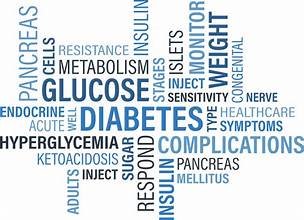Understanding Metabolic Syndrome’s Cluster of Conditions, Can Metabolic Syndrome be Completely Reversed? 4 Components
Metabolic Syndrome emerges as a complex health puzzle, intertwining various conditions that collectively elevate health risks. Let’s unravel the intricacies of this syndrome, dissecting its components, implications, and strategies for effective management.
Metabolic Syndrome: A Comprehensive Overview
– Definition: Metabolic Syndrome is characterized by a cluster of interconnected conditions that increase the risk of heart disease, stroke, and type 2 diabetes.
– Components:
1. High Blood Pressure (Hypertension): Elevated blood pressure, is a key contributor to cardiovascular issues.
2. High Blood Sugar (Hyperglycemia): Elevated blood glucose levels, often signaling insulin resistance.
3. Excess Body Fat Around the Waist: Central obesity, particularly visceral fat, is a significant marker.
4. Abnormal Cholesterol Levels: Elevated triglycerides and low levels of high-density lipoprotein (HDL) cholesterol.

Causes and Risk Factors:
– Insulin Resistance: A common thread linking the components of Metabolic Syndrome.
– Genetics: Family history plays a role in predisposition.
– Obesity: Particularly abdominal obesity.
– Sedentary Lifestyle: Lack of physical activity contributes to insulin resistance.
– Aging: The risk increases with age.
Implications:
– Cardiovascular Risks: Metabolic Syndrome significantly elevates the risk of heart disease and stroke.
– Type 2 Diabetes: The presence of Metabolic Syndrome increases the likelihood of developing diabetes.
– Other Health Complications: Non-alcoholic fatty liver disease, sleep apnea, and polycystic ovary syndrome (PCOS) are associated conditions.
Management and Prevention:
– Lifestyle Modifications: Adopting a heart-healthy diet, engaging in regular physical activity, and maintaining a healthy weight are foundational.
– Medications: Depending on individual risk factors, medications may be prescribed to manage specific components.
– Regular Monitoring: Routine check-ups to assess blood pressure, blood sugar, and cholesterol levels are crucial.
By embracing the principles of Naturopathy and Ayurveda individuals can take proactive steps to reverse the condition, improve their overall well-being, and lead a healthier, more balanced life.
Metabolic syndrome is a growing concern in modern health, characterized by a cluster of conditions that increase the risk of heart disease, stroke, and type 2 diabetes. These conditions include high blood pressure, elevated blood sugar levels, excess body fat around the waist, and abnormal cholesterol or triglyceride levels. The question many people ask is whether metabolic syndrome can be completely reversed. According to the holistic approaches of Naturopathy and Ayurveda, the answer lies in understanding the body as a whole and addressing the root causes of these conditions.
1. Dietary Modifications
Naturopathy: Emphasizes a plant-based diet rich in whole foods, such as fruits, vegetables, whole grains, nuts, and seeds. These foods are packed with essential nutrients and antioxidants that help reduce inflammation and regulate blood sugar levels. Eliminating processed foods, refined sugars, and unhealthy fats is crucial for reversing metabolic syndrome.
Ayurveda: Advocates for a diet that balances the doshas (body energies) through foods that are fresh, organic, and seasonally appropriate. Ayurvedic principles suggest favoring warm, cooked meals that are easy to digest, incorporating spices like turmeric, ginger, and cinnamon, which have potent anti-inflammatory and blood sugar-regulating properties.
2. Physical Activity
Naturopathy: Encourages regular physical activity as a cornerstone of reversing metabolic syndrome. Exercise helps to improve insulin sensitivity, reduce body fat, and lower blood pressure. A combination of aerobic exercises, strength training, and flexibility exercises is recommended.
Ayurveda: Promotes activities that align with one’s body type (dosha). For example, Vata types may benefit from calming, grounding exercises like yoga, while Pitta types might find balance through moderate aerobic activities like swimming. Consistent, mindful movement is key to maintaining physical and mental harmony.
3. Stress Management
Naturopathy: Recognizes the impact of chronic stress on metabolic health. Techniques such as meditation, deep breathing exercises, and time spent in nature are essential for reducing stress and its harmful effects on the body.
Ayurveda: Views stress as an imbalance of the mind-body connection. Practices like Abhyanga (self-massage with warm oil), Pranayama (breathing exercises), and meditation are central to calming the nervous system and restoring balance.
4. Detoxification and Herbal Support
Naturopathy: Focuses on gentle detoxification to eliminate toxins and support the liver, kidneys, and digestive system. This may include fasting, juicing, and the use of herbal supplements like milk thistle, dandelion, and bitter herbs to cleanse and rejuvenate the body.
Ayurveda: Emphasizes Panchakarma, a detoxification process that involves treatments like oil massages, steam baths, and herbal enemas to purify the body and mind. Ayurvedic herbs such as Triphala, Guggulu, and Ashwagandha are commonly used to balance metabolism and support overall health.
Can Metabolic Syndrome Be Completely Reversed?
From the perspective of Naturopathy and Ayurveda, metabolic syndrome can be reversed with a dedicated, holistic approach. By addressing the root causes—such as poor diet, lack of physical activity, chronic stress, and toxin accumulation—these traditional practices aim to restore the body’s natural balance and enhance its self-healing abilities. While this process may take time and consistency, the potential for complete reversal is real, especially when these practices are integrated into a long-term, sustainable lifestyle.
Conclusion
Understanding and managing metabolic syndrome requires a comprehensive approach that goes beyond conventional medicine. By embracing the principles of Naturopathy and Ayurveda, individuals can take proactive steps to reverse the condition, improve their overall well-being, and lead a healthier, more balanced life. These ancient systems of healing offer valuable insights and practical tools that, when applied consistently, can transform health and vitality.
Conclusion
Metabolic Syndrome serves as a red flag, signaling the interconnectedness of health conditions that demand attention. By addressing its components through lifestyle modifications, vigilant monitoring, and, when necessary, medical interventions, individuals can mitigate risks and pave the way for healthier, more resilient lives.
FAQs
1. Can Metabolic Syndrome be completely reversed?
– With early intervention and sustained lifestyle changes, the components of Metabolic Syndrome can often be managed effectively. However, individual responses vary.
2. Is medication always necessary for managing Metabolic Syndrome?
– Medications may be prescribed, especially when lifestyle modifications alone are insufficient. Individual health conditions and risks guide the decision to use medications.
3. Can regular exercise alone prevent Metabolic Syndrome?
– Regular exercise is a cornerstone in preventing and managing Metabolic Syndrome. It improves insulin sensitivity, promotes weight management, and contributes to overall cardiovascular health.
4. Is Metabolic Syndrome more prevalent in certain age groups?
– The prevalence increases with age, but lifestyle factors also play significant roles. Younger individuals with sedentary lifestyles and poor dietary habits can develop Metabolic Syndrome.
5. Are there specific dietary recommendations for managing Metabolic Syndrome?
– A heart-healthy diet, including whole foods, fruits, vegetables, and lean proteins, is recommended. Limiting saturated fats, refined sugars, and excessive salt is crucial. Individualized dietary plans may be advised by healthcare professionals.






